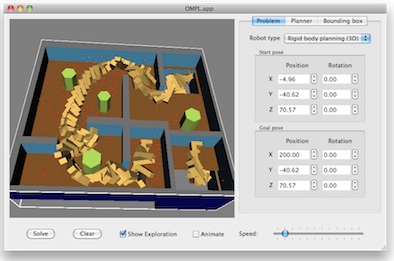Announcement from Kevin LeBlanc to ros-users
Hi everyone,
I'd like to let you know about a teleop stack I've developed to allow generic tele-operation "source" devices (such as keyboards, joysticks, etc.) to be used interchangeably to control generic tele-operation "sink" devices (such as robot bases, pan-tilt units, robot arms, etc.).
I know there are a number of tele-operation and joystick stacks and packages out there, but many of them are doing nearly identical things in slightly (and frustratingly) different ways. The purpose of this stack is to avoid the rewriting of source or sink specific code for different source-sink combinations, and to provide a common interface for a variety of tele-operation sources.
The code can be downloaded here:
https://github.com/skynetish/teleop
More information can be found here:
https://github.com/skynetish/teleop/wiki
Comments and feedback welcome!
Best,
Kevin








